#protopterus
Explore tagged Tumblr posts
Text






#Australian lungfish#Neoceratodus forsteri#South American lungfish#Lepidosiren paradoxa#Marbled lungfish#Protopterus aethiopicus#Gilled lungfish#Protopterus amphibius#West African lungfish#Protopterus annectens#Spotted lungfish#Protopterus dolloi#lungfish#fishes#marine biology#fish#fishblr#aquatic life#aquatic#poll#my polls#random polls#poll time#tumblr polls#polls#polls on tumblr#tumblr poll#polls polls polls#polls are fun
175 notes
·
View notes
Text







marginalia
#severance#mark s#helly r#marginalia#west african lungfish#desmatosuchus#paleo#stingray#moo deng#winghead shark#Eusphyra blochii#Myliobatoidei#Protopterus annectens#Choeropsis liberiensis
8 notes
·
View notes
Text

顔の模様がとってもかわいい
@スマートアクアリウム静岡
Your face paint is very nice
@Smart Aquarium Shizuoka
#lungfish#West African lungfish#African lungfish#プロトプテルス・アネクテンス#プロトプテルスアネクテンス#Protopterus annectens#アフリカハイギョ#ハイギョ#fish#freshwater fish#スマートアクアリウム静岡
36 notes
·
View notes
Text
Round 2 - Chordata - Dipnoi
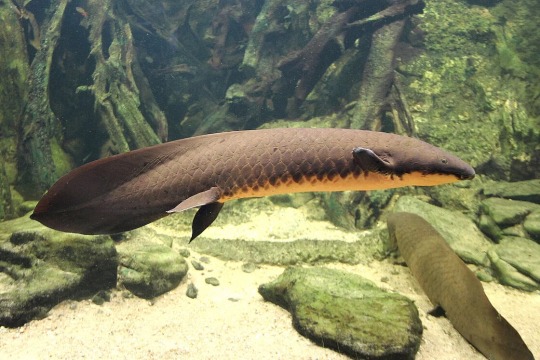
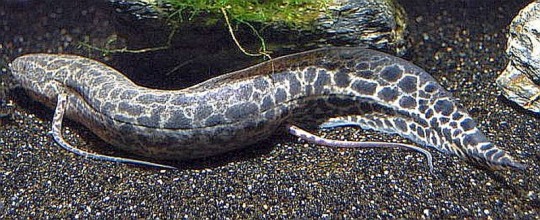
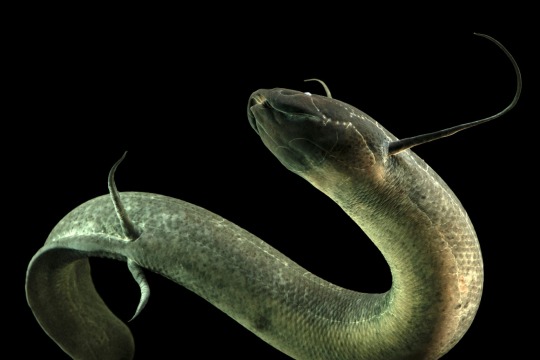
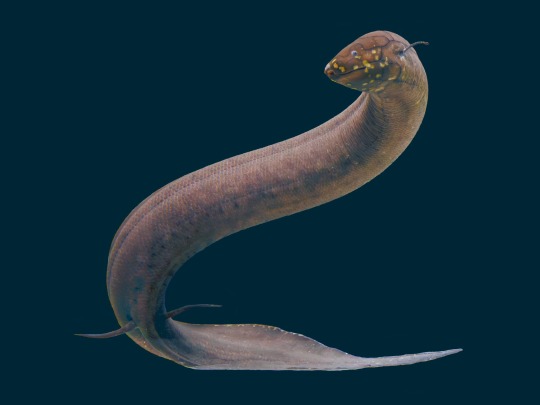
(Sources - 1, 2, 3, 4)
Dipnoi is a class of Sarcopterygiian fish commonly called “lungfish”. While widely distributed since the Early Devonian, today only 6 species remain. They are the closest living relatives to tetrapods (amphibians, reptiles, and mammals).
Like other Sarcopterygiians, lungfish have lobed, bony fins and a well-developed internal skeleton. True to their name, they have a highly specialized respiratory system which includes lungs, subdivided into numerous smaller air sacs. Most extant lungfish species have two lungs, with the exception of the Australian Lungfish (Neoceratodus forsteri), which has only one. The Australian Lungfish can breathe through its gills without needing air from its lung, but in all other species the gills are too atrophied to allow for adequate gas exchange. Lungfish have unique dentition, bearing fan-shaped tooth plates called odontodes, which are used to crush hard shelled organisms. Some groups have ridges on these tooth plates that form occluding blades. They are omnivorous, feeding on fish, insects, crustaceans, worms, mollusks, amphibians, and plant matter. African and South American Lungfish are capable of surviving seasonal drying-out of their habitats by burrowing into mud and estivating throughout the dry season.

(own work)
Propaganda under the cut:
The Australian Lungfish has existed in Australia for at least 100 million years, making it a true living fossil and one of the oldest living vertebrate genera on the planet. It is the most primitive surviving member of the ancient Dipnoi lineages.
The Marbled Lungfish's (Protopterus aethiopicus) genome contains 133 billion base pairs, making it the largest known genome of any vertebrate. The only organisms known to have more base pairs are the amoeboid Polychaos dubium and the flowering plant Paris japonica at 670 billion (possibly) and 150 billion, respectively.
The Spotted Lungfish (Protopterus dolloi) can aestivate on land by surrounding itself in a layer of dried mucus.
An Australian Lungfish named “Granddad” at the Shedd Aquarium in Chicago lived to be 109 years old, before he had to be euthanized due to an age-related decline in health. The current oldest Australian Lungfish is now “Methuselah”, who lives at the California Academy of Sciences, and is around 100 years old. Methuselah has been described as "mellow" by her keeper. She is also noted to like belly rubs, back rubs, and fresh figs.
Australian Lungfish are one of the cutest animals on the planet and I want a life-sized plushie/body pillow of one
86 notes
·
View notes
Text
Fish Fact Friday! 5-24-24
African lungfish (scientific name protopterus annectens) have a lung and are good at withstanding longer periods of drought, as they burrow in the mud and secrete a mucus around themselves that then hardens into an almost cocoon like structure! They can survive for up to a year this way, waiting for the waterways to fill up again.

References:
https://www.oregonzoo.org/animals/african-lungfish#:~:text=To%20manage%20this%20life%2Dthreatening,lungfish%20also%20hibernates%20in%20water.
63 notes
·
View notes
Text
Animal of the Day!
West African Lungfish (Protopterus annectens)
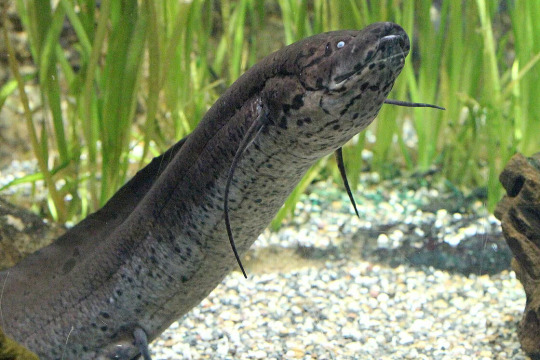
(Photo from Zoo Leipzig)
Conservation Status- Least Concern
Habitat- Western Africa; Southern Africa
Size (Weight/Length)- 3.6 kg; 100 cm
Diet- Mollusks; Frogs; Fish; Roots; Seeds
Cool Facts- The West African lungfish have one of the most complex respiratory systems of any fish. Capable of breathing air with help from gas bladders, they can maximize their gas exchange in their lungs. Even when water is abundant, West African Lungfish breathe directly from the surface. However, living in Africa often means a lack of water for most of winter. These lungfish are capable of living outside of water for these months, buried in dry riverbeds and waiting for the rains to bring rivers. During their aestivation, the West African lungfish doesn’t eat at all. One time, a lungfish survived 3 and a half years without eating anything as it waited for its river to fill.
Rating- 13/10 (Epitome of noodle arms.)
#animal of the day#animals#fish#lungfish#tuesday#august 15#west african lungfish#biology#science#conservation#the more you know
308 notes
·
View notes
Note
greetings, may i have the weirdest freshwater fish in your arsenal
Bam! Here you are, the freshest water freak i got
Most jawed fish are classified as ray-finned fish. However, these guys and Ceolocanths are the only remaining lobe-finned fish.
Another fun fact! Tiktaalik, also known as Grandpa, also known as one of the first fish to escape the sea, was classified as a lobe-finned fish. As were its descendants. So by purely taxonomic classification, YOU are a lobe-finned fish. Congratulations :D
Anyway, enough science lesson. Onto the feeesh

You get a Marbled Lungfish
Protopterus aethiopicus
32 notes
·
View notes
Text


This animal was requested!
39 notes
·
View notes
Text
Tmesipteris oblanceolata, a fern, has a genome five times larger than the human one. It is the largest yet observed in nature, reports Nature, and its 160 billion base pairs "raises questions as to how the plant manages its genetic material."
. . .
ETA: The marbled lungfish, Protopterus aethiopicus, has the largest animal genome—thirty billion base pairs less than this fern.
8 notes
·
View notes
Text
fish of the day (day 26): Gilled Lungfish (Protopterus amphibius)
Also known as East African lungfish, found in swamps and flood plains in East Africa. It's the smallest living lungfish as it only grows to 17 inches long (compared to other lungfish that can be up to 6ft). Like other African lungfish it has 2 lungs (this is news to me I had been assuming they all have 1 lung) They also bury themselves in the ground in mucus like other African lungfish and the South American lungfish. They are Least Concern but this is partially because of lack of data (to me it seems like this fish is not studied much, and the wikipedia article is barren)

1 note
·
View note
Photo

West African lungfish (Protopterus annectens)
Photo by Michel Gunther
#west african lungfish#lungfish#protopterus annectens#protopterus#protopteridae#lepidosireniformes#dipnoi#dipnomorpha#vertebrata#chordata
171 notes
·
View notes
Text
هناك أسماك يمكن أن تسبت وتجف، ولكن عند ملامستها للماء "تعود للحياة" مرة أخرى. واسم هذه السمكة هو بروتوبتيروس "Protopterus".
- سبحان الله -
7 notes
·
View notes
Photo


同じ水槽にレピドシレンもいたらしくて、その光景がみたかったなぁと思いました
大丈夫なんだ
寺泊水族博物館
#protopterus aethiopicus#protopterus#プロトプテルス#プロトプテルスエチオピクス#プロトプテルス・エチオピクス#marbled lungfish#lungfish#fish#freshwater fish#寺泊水族博物館
39 notes
·
View notes
Photo

The Marbled African Lungfish (Protopterus aethiopicus) breathes air, “walks” underwater with its fins, and can grow nearly six feet long!
© Solomon David
73 notes
·
View notes
Text

West African Lungfish, Protopterus annectens, at the Greater Vancouver Zoo
© 2003 Jeff Whitlock
[ID: A large lungfish swimming in murky green water towards the viewer.]
83 notes
·
View notes
Text

Protopterus annectens or the West African Lungfish
Living in areas that don't always have water, the West African Lungfish has developed an interesting way or survival. During the dry season, lungfish will burrow below ground and surround themselves in a slime that acts as a protective cocoon.
#marine biology#marine bio#marine biodiversity#marine ecology#marine animals#marine animal#oceans#river#river wildlife#ocean#ocean facts#ocean creatures#ocean animals#sea#sea creatures#sea animals#sea life#animals#animal#fish#fish facts#animal facts#fun facts#lungfish#west african lungfish#wildlife#nature#earth
193 notes
·
View notes